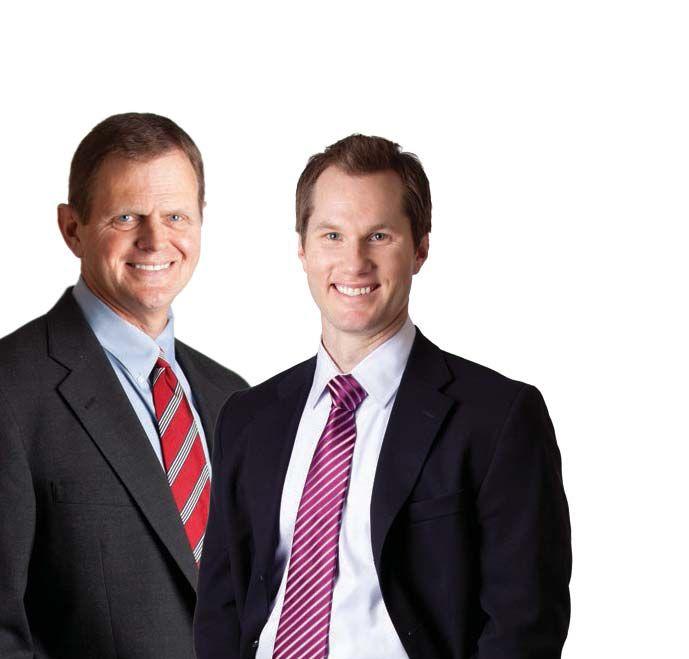
9 minute read
DIGITAL DIGEST
The Dialogue
Is a park coming to 635 at Skillman?
“Can we defer discussion of an overlay park over LBJ until after the streets of Dallas are brought up to the standards set by the Dallas City Council and the Dallas Police and Fire Retirement Fund is solvent? I agree that more park and recreation space is needed, most particularly for more soccer pitches. One way to achieve this needed land is to identify those multi-family complexes that have been the most egregious in their failure to manage their units in maintenance and in vetting the background of prospective tenants. Those most egregious complexes could then be subjected to eminent domain and scraped to establish needed park space for the city.” —Dormand
“Like that interchange isn’t confusing enough as is.” —Loltehe
Shady’s Burger Joint coming to T. Hee’s old location
“My idea to turn the old barber shop into a growler filling beer bar is lost! Glad to see another nice restaurant option in that shopping center. Now if the updates can just continue in the shopping center across the street, we’d really be on a roll. We could use a yogurt shop and maybe some Thai or Chinese.” —Jason
“Sad to see T. Hee go, but happy to welcome this new business into our neighborhood. I think it’s a great sign that they already have three successful years under their belt at another location. We can’t wait to give them a try!”
—Kerry Slaughter
Senior Living Near White Rock Lake


Q&A: Landfill engineer Richard Akin
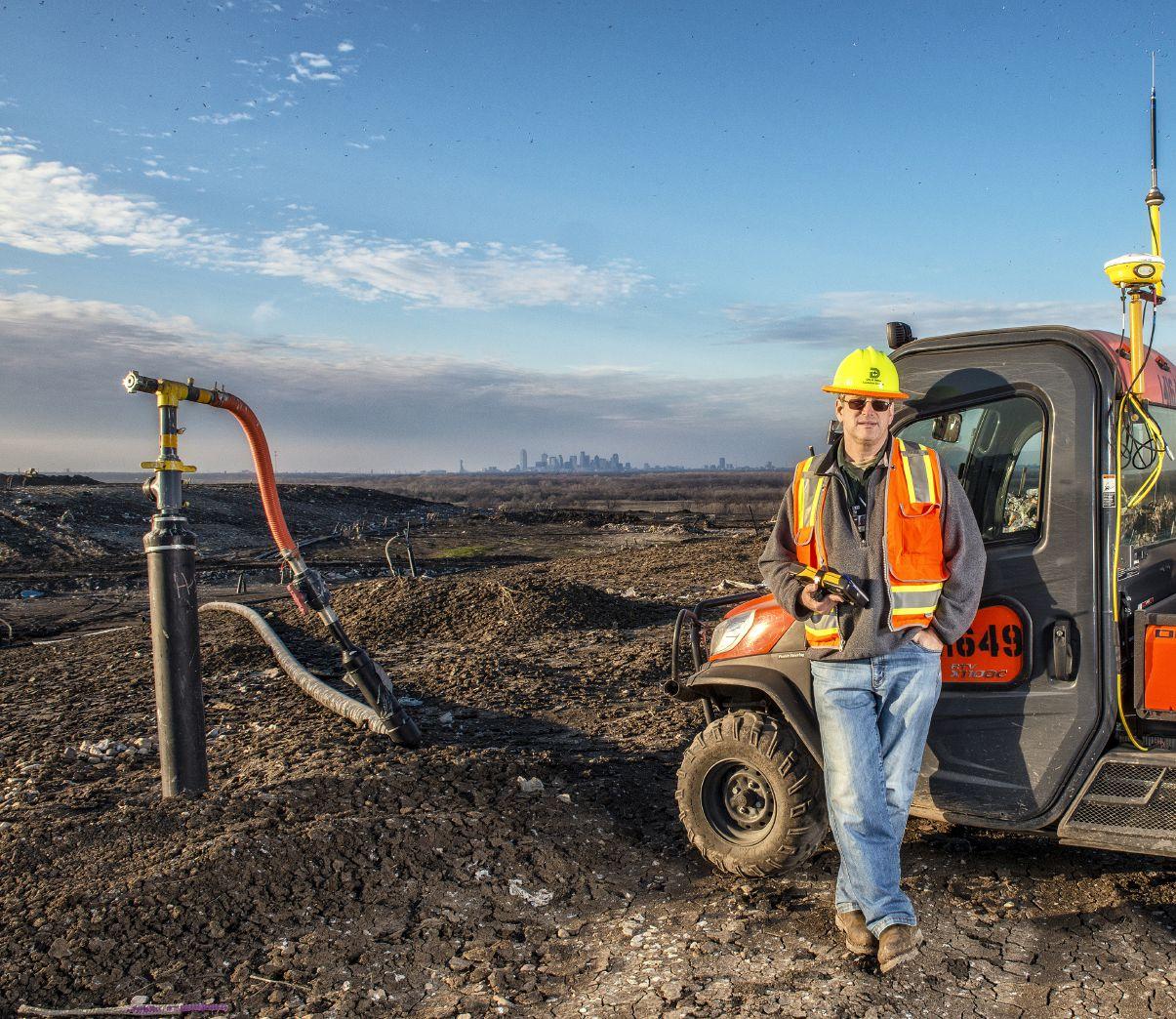
Most of us don’t think about our trash once it leaves the sidewalk. If we do, it’s probably not to contemplate the finer details of how the managers at McCommas Bluff Landfill keep the dump from overflowing or how it drains rainwater. But for Lake Highlands resident Richard Akin, it’s all he thinks about at work. Akin is the senior landfill engineer at McCommas Bluff. Sounds like a job that stinks, right? Far from it. “It’s a fun place,” he says. As long as he does his job right. “We like to know that we’re not leaking, that we’re not polluting and that we’re collecting as much as we possibly can,” he says — the rest of us can continue on our merry, oblivious way.
What’s the biggest challenge of your job?
From an engineering perspective, just making sure we don’t overfill. Landfills live and die by what’s called ‘airspace’ — what we’re allowed to fill. As long as we don’t go over a certain height, everything is fine. So I have to make sure that doesn’t happen.
What does your day-to-day look like?
I’m responsible for drainage and roadways through the landfill and projects that we’re going to do on-site, that we’re not going to contract out. I’m also in charge of the environmental science section. I have an environmental coordinator and four [hazardous-waste] inspectors. We don’t accept [hazardous waste]. They’re looking for things that are not acceptable. They do random inspections on the loads of customers, so they’re looking for things like unused paint or materials containing
They’re also responsible for all the daily checks for our route site to look for what we call ‘leachate seeps.’ We have a big hill of trash and it gets rained on. Rainwater will percolate through the surface material, get into the trash, and it will matriculate down through the garbage, and it collects things as it goes to the bottom. If it decides it wants to come out on the side of the hill, it will form a wet area called a ‘seep.’ As long as it’s not running, it gives us a little time to get it fixed. The way they fix it is they pack more dirt on top of it, which encourages liquid to stay back into the hill and not try to pop out. If it forms any type of a stream, those require immediate attention because we don’t want any of that stuff to escape the landfill. So environmentally, there are lots of things to look at and lots of things to do.
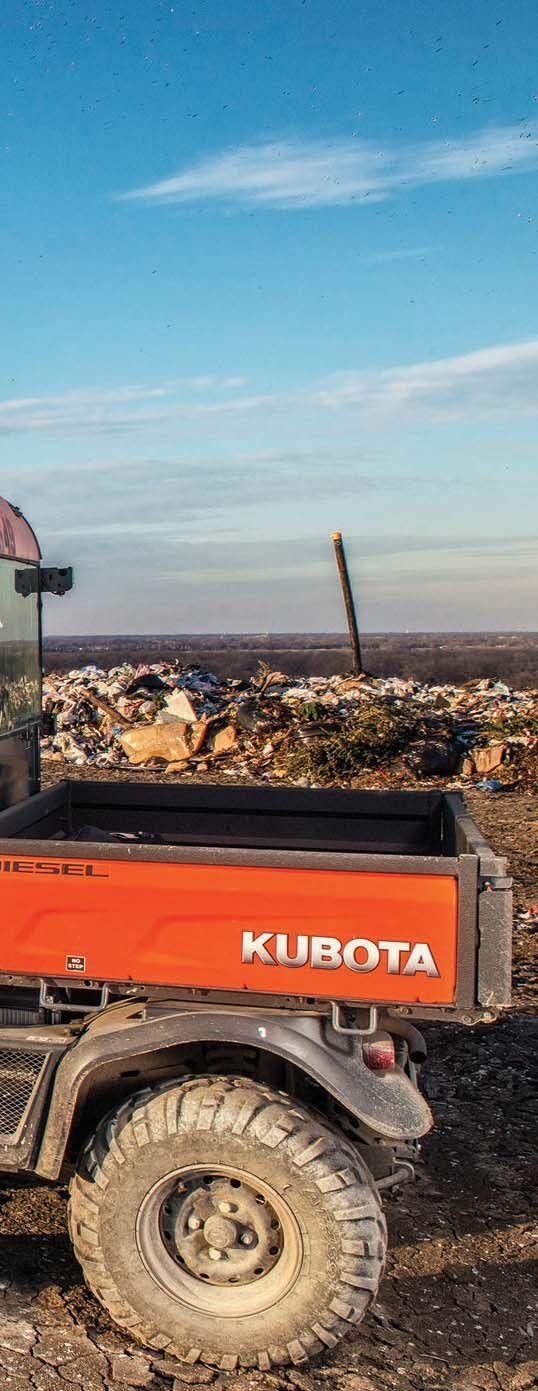
Was it hard to get used to working so closely with garbage?
Not really. It’s funny people always ask, ‘Well doesn’t it stink? It’s nasty.’ Actually it’s not as nasty as you think. It takes a little bit of getting used to, but at the landfill there are different odors that are created by different things. Landfill gas itself has a particular odor. Leachate has a particular odor. The garbage itself has a particular odor. We can use those odors if we’re around the landfill inspecting, if we smell something in a place we don’t expect it. Visually it’s easy to see if something is not where it’s supposed to be, but if it’s something you can’t see but you can smell you go, ‘OK we shouldn’t be smelling this, why are we?’
Is your job dangerous?
The greatest danger to a landfill is fire. People ask about landfill gas. We’re con- fill gas has an odor but methane itself does not.’ It is odorless and colorless, so you don’t know it’s there except that it burns nicely, although it’s not explosive.


Have you experienced a fire at McCommas?
cerned about it because it’s a greenhouse gas. It’s methane. People want to know what it smells like, but it’s like, ‘Well, land-
Yes, but typically the fires that we see out here are vehicles. An actual landfill fire, though, I have not had to be a part of one of those. I hope to never be a part of it because you don’t fight them the same way you fight a house fire. Water won’t put it out. It’s a smoldering fire, and it could burn for years. So how do I know that I don’t have one right now? We have over 500 gas wells on the landfill. We’ve been harvesting methane gas. If we see a spike in the temperature, then we know something is awry and we go start the investigation. You have to smother a landfill fire with dirt. Part of our permit is a requirement that we have to have enough dirt on hand to be able to cover the entire working face within an hour with six inches of dirt.
Do you eventually expand the landfill or what’s next?
McCommas is as big as McCommas is ever going to be. There is zero desire to expand it. The permit modifications that would be involved would be such a hurdle that the city is not going to do it. The city decided that they wanted one single place to serve the needs of Dallas County, and that was back in the mid-’70s when they started the permitting process for McCommas. They figured that their longrange plan was that it would have a life of 50 years. The 1980s was when they finally started accepting trash at the landfill. McCommas was originally permitted to bring in 10,000 tons a day. We haven’t seen that kind of volume since the last big economic boom many, many years ago. We see between 5,000-8,000 tons a day with the exception of Sunday because nobody brings us anything on Sunday. At the current rate of material coming in and at the rate that it’s settling, we have about

We have an absolutely panoramic view of downtown, and on a clear night it is a very beautiful sight. We have sunrises and sunsets that would blow your mind.
Interesting. What else would surprise people about the landfill?
45 years still left in McCommas. We have an old part of the landfill that you’d never know is a landfill because it’s covered in grass. It’s also one of the highest land points in the City of Dallas.
It has nothing to do with the landfill itself. It’s the wildlife. McCommas itself is about 2,200 acres. Only about 978 of that will ever be used for the landfill. The rest of it is nature. I recently took a picture of a beautiful stag. It was magnificent, and silhouetted by the sunset. While driving through part of the landfill one day, I counted 15 deer, but we also have about 300 feral hogs. That’s not as pretty. They get to be big. We can’t hunt them or hurt them. We cannot touch them. We have four nesting pairs of red-tailed hawks. We have vultures and seagulls by the thousands. We’re also on one of the migratory paths for pelicans.
—Brittany Nunn
Rock ‘n’ roll high school
That time Ron Howard made a movie in Lake Highlands
In the late 1970s, at the dawn of his directorial career, Ron Howard — popularly known as his sitcom character Richie Cunningham — rolled, along with his actor brother, Clint, and much of his “Happy Days” production crew, into Lake Highlands to shoot a movie about rival teenage rock bands. The finished product premiered Oct. 26, 1978 on NBC. Dallas residents held watch parties and thrilled at the sight of familiar places and faces — there was Town East Mall, scene of the climactic Battle of the Bands; Annex Avenue in East Dallas, where the fictional garage band Cotton Candy rehearsed; the Granada movie theater on Greenville, site of the main characters’ first date; and Lake Highlands High School, which was to “Cotton Candy” what Rydell High was to “Grease.” That year, Scott Patterson was a senior at LHHS, one of about 140 chosen to play extras in scenes filmed on campus.
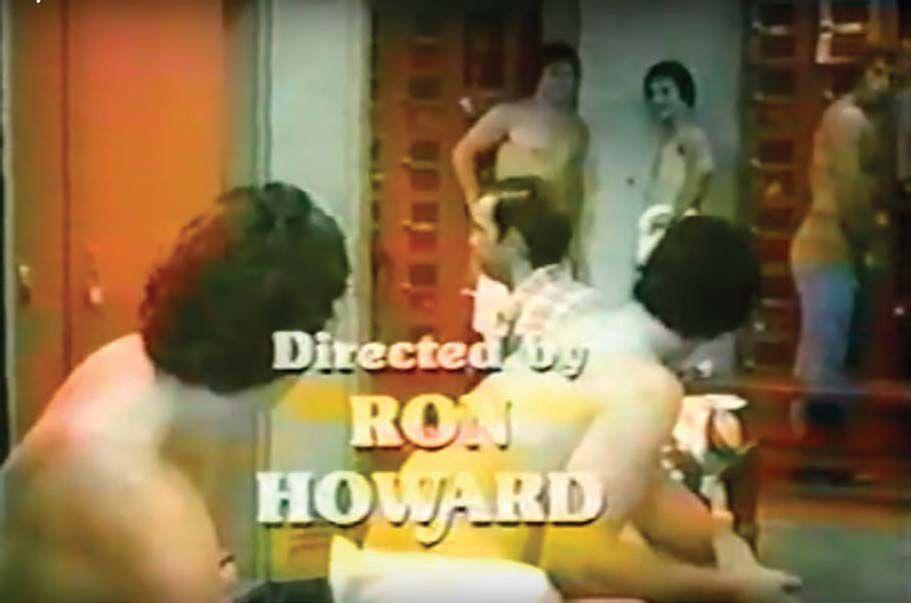
“They wanted the school to look smaller than it is, so, I don’t remember who decided, but honors students got to do it,” Patterson says. “They filmed all of the hallway scenes in C hall, and the graduation scene on the junior varsity field, all to make the school seem smaller. It lasted, maybe, a couple of weeks. School went on as usual.” Patterson says he and his peers revered Ron Howard, who was just 24 years old at the time. The TV star shook the kids’ hands, hung out with them after filming and answered questions about his career, Patterson says.
“We knew him as Richie Cunningham. He seemed like Richie Cunningham. Not bossy, but in command. He was personable, down to earth and, in real life, he was smaller than he appeared on ‘Happy Days.’ His little brother, who stars in the movie, was always with him.”
Mark Ridlen, a musician and DJ from the White Rock area was in a band called Quad Pi, whose members also starred in the movie.
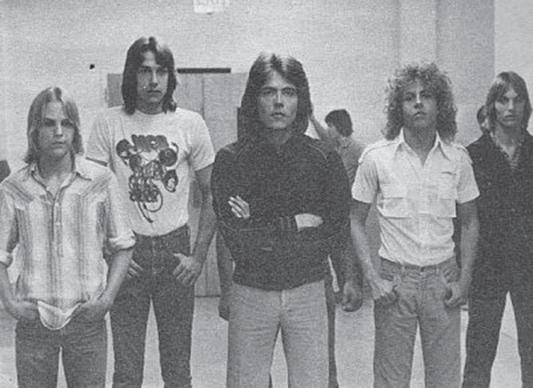
“I was young and skinny and cute then. I was a rock star,” Ridlen says. He recalls auditioning for Howard at a studio. “We did one song. We nailed it. Our competition all looked too old to play high school kids, so I knew we were in.”
He and bandmates Morgan Ferguson and John and Tad Painter starred alongside actor Mark Wheeler as the members of Rapid Fire, the popular, evil nemesis of the hero underdogs Cotton Candy. Ridlen didn’t have any speaking lines, but he and his curly, shoulderlength locks appear in several scenes.
“They gave Tad the only speaking line, but I managed to get in front of the camera a lot and to stand out. On the last day, I decided to be punk, a sad attempt in my Patty Hearst T-shirt and dog collar,” he says with a laugh.
Former Highlandette director Katha Black chaperoned students at the Holiday Inn where they filmed the prom scene.
“I served punch for 5 hours that night to get about 20 minutes of a prom scene,” she says. “I also appear in two of the hall scenes.”
“Cotton Candy” was a far cry from Howard’s many Oscar-worthy flicks (“Apollo 13” and “A Beautiful Mind,” for example) that followed.
According to an article by The New York Times entertainment writer Mark Allen, it originally was intended as a pi- lot for a TV series.
“And it shows,” Allen writes. “Every line of the film is shouted, every action over-hashed,everysequencedirected formaximum,squishy,melodramatic exploitation,” he notes.
Maybe that’s part of the reason why, whenLakeHighlandsgradGregVan Dine wrote to Ron Howard Productions a few years ago requesting a copy of the movie, he received this response: “That film is deep in the vault and will never, ever,letmesayagain,neverseethe light of day again.”
But “Cotton Candy” would not go quietly into obscurity. Allen acknowledges the film’s cult appeal. It’s part of a “subgenre of made-for-TV movies about high schoolteensembroiledinrock-band drama that holds immeasurable hypnotic powers over a lot of my generation,” he notes.
Patterson finally scored a copy of “Cotton Candy” in 2008, when Ridlen hosted a “Cotton Candy” anniversary screening and party and distributed “Cotton Candy” DVDs to guests.
Those parting gifts did not come easily, Ridlen says. When the Quad Pi parents found out their kids would be in a TV movie, they all bought VCRs so they could tape it. But the recordings that survived were of barely watchable quality. Years ago, however, Ridlen met a guy who had a perfect copy converted to DVD.
“It has the commercials and all. It’s a total time machine to Dallas in that era,” he says. They made copies for all the attendees. He says that anyone who wants to see it will have to attend the next anniversary celebration in 2018.
“I’m not putting it on YouTube. You’ll havetocometotheparty,”whichhe promises will be a blast. A low-quality but watchable version of the film is available on YouTube. —
Christina Hughes









